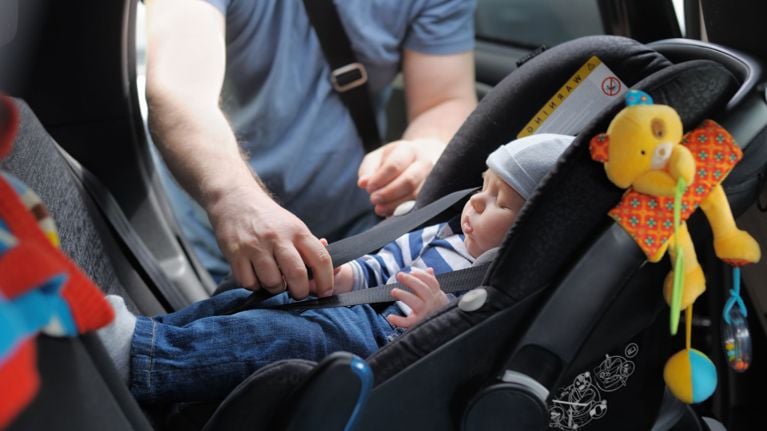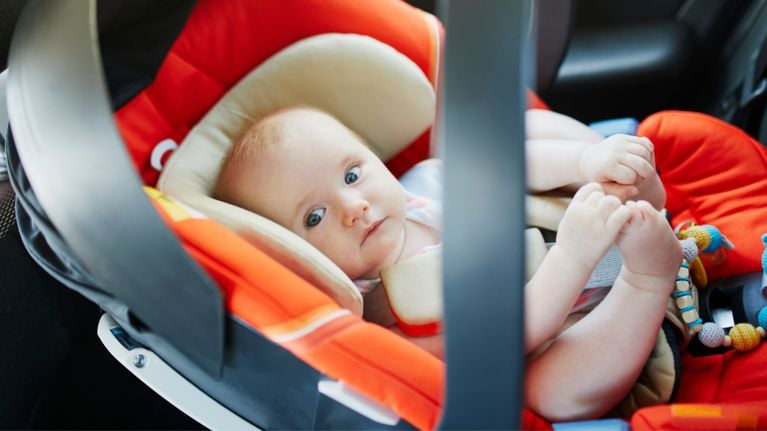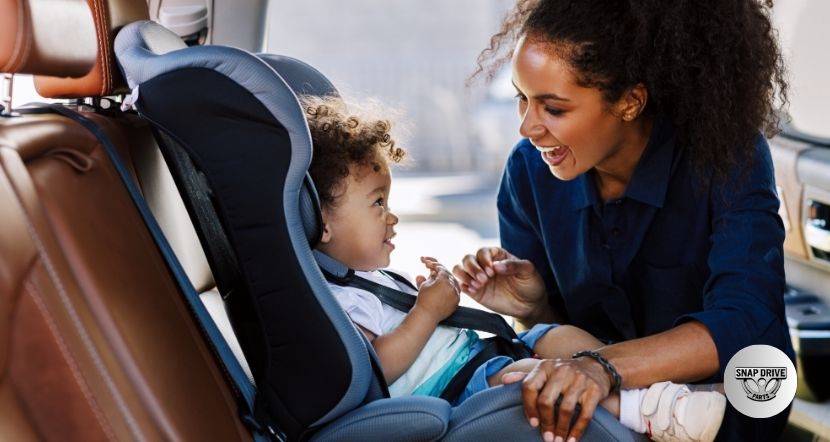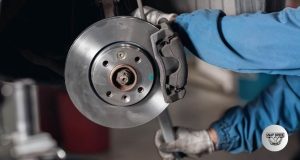Last Updated on October 16, 2025 by Aaron Blake
When it comes to your child’s safety, every second and every choice matters. You might think that holding your little one in your arms or letting them sit without a proper car seat is okay for short trips.
But the truth is, using the right child car safety seat can be the difference between life and tragedy in a sudden stop or accident. Imagine knowing exactly how to protect your child every time you hit the road—wouldn’t that give you peace of mind?
You’ll discover why child car safety seats are not just important but essential, how they work, and what you need to look for to keep your child safe on every drive. Don’t miss out on these life-saving insights that could make all the difference for your family.

Credit: www.todaysparent.com
Contents
Risks Without Proper Car Seats
Using proper car seats for children is very important. Without them, children face serious risks during car rides.
Car accidents can cause severe harm to children who are not secured correctly. Proper car seats help protect them.
Common Injuries In Car Accidents
Children not in the right car seats often get hurt badly in accidents. Their small bodies are more fragile than adults.
Some common injuries include head trauma, broken bones, and internal injuries. These can cause long-term problems.
- Head and brain injuries from sudden impacts
- Neck and spinal cord damage
- Fractures in arms, legs, and ribs
- Internal bleeding and organ damage
- Facial injuries from hitting parts inside the car
Statistics On Child Safety In Vehicles
Data shows many children suffer injuries in car crashes because they lack proper car seats. Proper use reduces risk greatly.
Studies prove that child safety seats lower the chance of death by 71% for infants. For toddlers, the risk drops by 54%.
| Age Group | Risk of Death Without Car Seat | Risk Reduction With Car Seat |
|---|---|---|
| Infants (under 1 year) | High | 71% lower |
| Toddlers (1-4 years) | High | 54% lower |
| Children (4-8 years) | Moderate | 59% lower |

Credit: www.todaysparent.com
Types Of Child Car Seats
Child car seats keep children safe during car rides. Choosing the right seat depends on the child’s age, weight, and height.
There are three main types of child car seats. Each type fits a specific stage of a child’s growth.
Infant Car Seats
Infant car seats are for newborns and babies up to about 1 year old. They face the rear of the car to protect the baby’s head and neck.
- Designed for babies weighing up to 35 pounds
- Lightweight and portable
- Often come with a base that stays in the car
- Can be used as a carrier outside the car
Convertible Car Seats
Convertible car seats grow with the child. They can be used rear-facing for babies and forward-facing for toddlers.
| Mode | Age Range | Weight Limit |
| Rear-facing | Infants to about 2 years | Up to 40 pounds |
| Forward-facing | Toddlers to about 5 years | Up to 65 pounds |
Booster Seats
Booster seats help older children use the car’s seat belt properly. They raise the child so the seat belt fits well.
- For children aged about 4 to 12 years
- Used when child outgrows forward-facing seats
- Helps position seat belt on the shoulder and hips
- Types include high-back and backless boosters
Choosing The Right Seat
Child car safety seats protect kids in car accidents. Picking the right seat keeps your child safe.
Each seat fits different ages and weights. Knowing these rules helps you choose the best seat.
Age And Weight Guidelines
Car seats come in types for babies, toddlers, and older kids. Follow age and weight rules for safety.
- Rear-facing seats suit newborns up to 2 years or 40 pounds
- Forward-facing seats fit children 2 to 5 years old, 20 to 65 pounds
- Booster seats work for kids 4 to 12 years old, 40 to 100 pounds
- Use seat belts only when child is big enough and mature
Installation Tips
Correct installation ensures the seat protects your child well. Follow instructions carefully every time.
- Read the car seat manual and your vehicle’s guide
- Use the LATCH system or seat belt to secure the seat
- Check that the seat does not move more than one inch side to side
- Place the seat at the right angle to support your child’s head
Common Mistakes To Avoid
Many parents make errors that reduce safety. Avoid these mistakes to keep your child safe.
- Using a seat that is too big or too small for your child
- Installing the seat loosely or at the wrong angle
- Placing the seat in the front seat with an active airbag
- Not tightening harness straps properly
- Using expired or damaged car seats
Legal Requirements And Safety Standards
Child car safety seats protect kids in car accidents. Laws and safety standards help keep children safe.
These rules guide parents on which seats to use and how to install them correctly.
Laws By Region
Every region has different laws for child car seats. These laws say what type of seat is needed for each age or size.
Parents must follow these laws to avoid fines and keep children safe during travel.
- United States:Children must use car seats until age 8 or 4 feet 9 inches tall.
- European Union:Child seats are required until 12 years old or 135 cm tall.
- Canada:Laws vary by province but usually require seats until age 9 or a certain height.
- Australia:Children must use approved seats until they turn 7 years old.
Certification Labels To Look For
Certified child car seats meet safety tests. Look for special labels that show the seat passed these tests.
Labels help parents choose seats that follow strict safety rules and protect children well.
- FMVSS 213 (USA):This label means the seat meets US safety standards.
- ECE R44/04 or R129 (Europe):These labels show the seat complies with European safety rules.
- CMVSS 213 (Canada):Indicates the seat meets Canadian safety requirements.
- AS/NZS 1754 (Australia/New Zealand):Shows the seat passed safety tests in these countries.
:max_bytes(150000):strip_icc()/prt-graco-easyturn-360-2-in-1-rotating-convertible-car-seat-ariel-laub-10-d375f61616994c1e83cc6420ce281742.jpeg)
Credit: www.parents.com
Frequently Asked Questions
What Age Should A Child Start Using A Car Safety Seat?
Children should use car safety seats from birth until they outgrow the seat’s height or weight limit.
How Do Car Seats Protect Children In Accidents?
Car seats hold children securely, reducing injury risk by absorbing crash forces and preventing ejection.
Are All Child Car Safety Seats The Same?
No, seats vary by age, size, and type—infant, convertible, booster—each fits different child needs.
Can I Use A Second-hand Child Car Safety Seat?
Used seats might be unsafe due to damage or expired parts; new seats are safer and recommended.
When Should A Child Switch From A Car Seat To A Seat Belt?
Switch when the child is tall enough to sit with back against the seat and feet on the floor.
Conclusion
Child car safety seats save lives every day. They protect children during accidents and sudden stops. Proper use keeps kids secure and reduces injuries. Parents must choose the right seat for their child’s age and size. Installation should be correct and checked regularly.
Small steps make a big difference in safety. Keep your child safe by using car seats every trip. Safety is a simple choice that shows you care.





